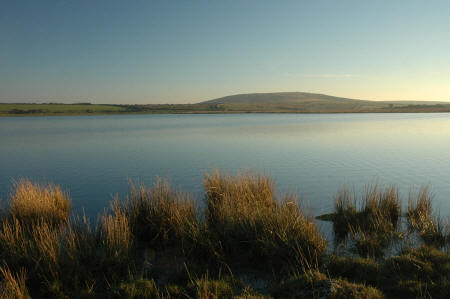|
|
| home | features | exhibitions | interviews | profiles | webprojects | gazetteer | links | archive | forum |
|
The Unknown Guest In an article written to coincide with 'The Dark Monarch' at Tate St Ives, Paul Newman reflects on paganism, folklore and the occult in Britain and Cornwall. The title is taken from the Nobel prizewinning author, Maurice Maeterlinck, who used it in 1914 in an essay that tried to get around the inconsistent, disconcerting and frustrating problem of paranormal phenomena.
Paul Nash, fresh from the killing fields of the First World War, admired this miraculous carving, noting it had the “lineaments of a work of art” but in order for it to be properly grasped another way of seeing was necessary, a re-education of the eye and a shift of perspective. It was also an image that healed many cultures, Cornwall, Britain and Europe. Depicted on eve of war by Eric Ravilious, 'The Vale of the White Horse' (picture below left) catches it almost vanishing into dawn whiteness. Throughout ancient Europe the symbol of the horse goddess was part of a pagan solar cult; the sun was perceived as being carried across the sky in a chariot pulled by a team of horses. In the archaic May Day celebrations at Padstow, Cornwall, the Obby Oss dances at dawn, and this may give a clue to the significance of the 112-metre-long Uffington Horse, which actually appears to run from east to west, as if galloping out of the dawn.
It is named after the banned novel by Sven Berlin that is indebted both to Dylan Thomas’s bubbling and chirpy 'Under Milk Wood' and Robert Graves’s troubling and quirky 'The White Goddess', and which pays homage to Cornwall, that most superstitious of regions. The Dark Monarch who reigns here is mercurial, destructive and creative, a supernatural agency who works out its purpose through the lives of men and women and the elements.
WITCHES OF PENWITH Sven Berlin located the character of the land in the underlying rocks. The artist Ithell Colquhoun would have agreed; she attempted to correlate psychology and geology, saying granite produced tough but inflexible people. One intriguing feature of the Cornish moors is the way in which granite erodes in a cool, wet climate, producing the mad if playful spheroidal weathering seen to dramatic effect on Rough Tor and Zennor Carn. Rocks are piled like a giant’s counting house. Sinisterly humped, arranged in pillars or isolated outcrops, they lean their great lizard skulls against each other or appear to grin like monstrous human profiles. They loom above the casual stroller and, in thick mist, change their shape. They are marvellous to climb and take long views from and their names, like Toad Rock and Bear Rock, make a splendid geological menagerie. “Imagine what a portentous monster,” one writer remarked of Bear Rock, “this would become to the superstitious mind of the priest-ridden Middle Ages when wrapt in a shroud of mist, or sharply outlined against the rising moon.”
East of Zennor, on Burn Downs, the
witches of Penwith used to assemble on Midsummer’s night and kindle a
fire to the Devil. The so-called ‘Black Sabbath’ was thought to go back
beyond the memory of man. Hence it is a matter of sensitivity among
pagans that Ronald Hutton dates their faith from 1950 when the honorary
warlock, Gerald Gardner (picture below right), started putting it together, inviting Aleister
Crowley and
The victim would only have to let out a gasp of assent and sign a bit of bloody paper and the torturer had extracted a full confession. If the witch had not been sighted near the place of her alleged felony, a hare or raven appearing in the same would serve equally well, as it was accepted they could shape-shift at will. One pragmatic, level-headed judge protested at justice being warped in such a way, saying. “This is utter nonsense. Do you not think, if this poor old woman indeed had the power to change into a bird, she’d not do so now and fly away from these foolish, fantastical accusations?” On the larger issue of the provenance of witchcraft, if there was an organised female cult during the Middle Ages and later, who congregated on hilltops for midnight orgies, one might have expected to find descriptions of their revels from the thousands of shepherds all over Europe, so it is rather odd that only the persecutors produced the evidence. This is why Hutton dubs ‘Wicca’ as the modern religion Britain has given to the world. Naturally he’d be the first to admit there were such people as witches hundreds of years back, but they were not a religion so much as a scatter of country folk who were familiar with herbs, charms and fortune-telling.
THIS FEROCIOUS, FREAKISH CREATURE
This ferocious freakish creature – Black canvas, horse-head and snappers, witch’s cap With weird heathen markings, led by drums And medieval songs, has not before set foot Within St Petroc’s hallowed precincts. The Vicar (Does the Bishop know of this?) receives Him and his rowdy followers with courtesy, Maybe with conversion, even baptism, in mind. ‘Rise up Father Christopher, we know you well and fine, For summer is acome unto Day. You have a shilling in your purse, and I wish it was mine, In the merry morning of May.
Rawe, a scholar in matters of Cornish history himself, asks the question: What is pagan? What is Christian? Ribald jesters on bench-ends, and Green Men Staring through the leaves, grotesque faces On the fonts, horned gargoyles, even here and there (As a Kilpeck) a Sheila-na-gig Presenting herself shamelessly upon the roof-eaves – What part did these play in the Christian cycle?
THE LAST GREAT CORNISH DRAGON
Petroc whispers a psalm into the dragon’s ear. Soothed, the beast gently licks his hand. Binding his girdle round the monster, the saint leads him away: So Petroc led the docile creature down To the sandy seashore, where amid the waves That last great Cornish dragon swam away Bound for what strand or desert island far We none of us can tell… (Petroc of Cornwall, Donald R. Rawe)
Instead of being dispatched, the dragon is pacified and led away from the scene of his oppression.
On the famous Gundestrup Cauldron (detail left), recovered from the swamps of Denmark, is a relief of Cernunnos, Lord of the Beasts, grasping his sacred python. This stag-headed god is shown surrounded by bears, wolves and birds, all offering obeisance. In other depictions, the python serves as a belt, a powerful circle of protection. Similarly Petroc was able to use his girdle or belt to lead the dragon away. Taking a lead from his pagan predecessor, he too befriended his antagonist rather than impaling him like St George with a spear.
THE ETERNAL FLOW OF SOME DREAD MEANINGNot long ago, there came out an enjoyable, well-researched book on the St Ives art colony by Michael Bird, in which there was a mildly amused section on Sven Berlin and poets like John Heath Stubbs who played up the ‘dark monarch’ or malign agency aspect (see interviews and features index). This melodramatic literary technique is often applied to Cornwall. The only proviso I would add is that this stereotype did not originate with awe-struck English ladies in bonnets and crinolines gazing aghast through drenching drizzle at the ruins of Tintagel or letting out delighted shrieks when they peered down the vast hole of Delabole. Those who worked the great quarries of the north coast, or mined the chambers of Botallack beneath the groaning Atlantic or craned up cargo from the lofty, perilous stagings of St Agnes harbour, were pursuing truly frightening occupations. Life was hard, stark, dramatic, even Gothic.
No safety precautions were installed at Dolcoath. Amid the dripping heat and sulphur fumes, buckets would crash down from severed chains and fragments of rock shatter on the stagings. Ore-laden barrows with candles on the ends creaked back and forth and flickered like glow-worms. The din of hundreds of picks impacting on rocks made a vibrating mesh of echoes. Occasionally a violent accident would take place and these human disasters, coupled with the torrid, explosion-lit atmosphere, inspired the poet to make a comparison between Dolcoath and Hell. The likeness was apt – a pitch-black hole full of dark, sweating shapes, smoke, explosions and clanging machinery. Harris both hated and dreaded it, yet it so deeply impressed him that he was able to forge a response: Hast ever been down a mine? Has ever been Down its fable grottoes, wall’d with gems, And canopied with torrid mineral-belts, That blaze within the fiery orifice? Hast ever, by the glimmer of a lamp, Or the fast-waning taper, gone down, down, Towards the earth’s dread centre, where wise men Have told us the earthquake is conceived, And great Vesuvius hath his lava-house, Which burns and burns for ever, shooting forth As from a fountain of eternal fire? Hast ever heard, within this prison-house, The startling hoof of Fear? the eternal flow Of some dread meaning to thy soul? Is this “hoof of fear” the hoof of Pan – inducing ‘panic’ and foreboding? In Dolcoath, John Harris confronted the sublime and the terrible. What was the ‘dread meaning’ that flowed to his soul? Was it similar to the “huge and mighty forms” that induced awe and perplexity in the young Wordsworth as he rowed across a lake in Cumberland and sensed the solemn mountains peering down on him? Was it another version of Sven Berlin’s ‘dark monarch’ who, after all, is a mask of Pan?
SPIRITUAL BLACK COUNTRY
For a while he was blissfully happy, enjoying the artistic company and Cornwall’s sense of ‘otherness’, but then a sense of oppression crept over him. In particular, he complained of an atmosphere of horror and desolation in the area towards Morvah which he supposed to have been the centre in ancient times ‘of sacrificial blood-rites and unspeakable abominations’, the exhalations from which still poisoned the air. One evening, alone in the house, he heard an appalling crash, like a thunderbolt or exploding bomb, but could trace it to no source. Finally he put it down to the Knockers who dwelt below ground in the derelict tin mines. Another time, on a brilliant autumn day, with only a faint breath of wind, he was oppressed by a tiny cloud in a sky otherwise clear. The little fleecy puff hung above his house tenaciously, so that while the rest of the world basked in the glorious sunshine, he found himself trapped in a patch of shadow that seemed to follow him around. Like Heseltine, he found Tregerthen restful and invigorating for a period, his attitude was gradually change until he called it ‘a spiritual black country’. Initially D.H. Lawrence, who spent a year or more during the First World War in Penwith, judged the Cornish likeable, slightly soft, with the dreamy aura of the Celts. Similarly he proved well-inclined towards the peasant cultures of Italy, Mexico and Sardinia, divining in them what he called the ‘holy ghost’ or the enduring spirit of authentic emotional existence and approving of the healthy, rounded sexual lives he thought might be theirs. Their integrity, he believed, would outlive the Behemoths of mechanisation. But Lawrence – an early advocate of pagan ways – had not caught on how human sex had long been superseded. The truly efficient reproductive mechanism of the century was neither the human being nor the rabbit. The greatest breeder of the lot was the machine with the capacity to make other machines and innumerable products in regulated quantities from single figures to millions of millions. And what more powerful testimony to the ‘dark monarch’ of industry than the hundreds of free-standing engine houses dominating the cliffs and carns of Cornwall? In them thousands of men had been reduced to worker bees as they funnelled through miles of underground passages in order to bring up and smelt the molten-white, hissing honey of the age of manufacturing.
MAGICAL VERSUS RATIONAL
An early encounter took place in the 1st Century AD when the Roman General Suetonius Paulinus crossed the Menai Strait to Anglesey, intending to quell the Druid order. On the far shore his men were startled to see a wall of wild-haired, heavily painted, shrieking men and women, wielding flaming torches and howling curses at their enemy. For a moment the Romans felt a tremor of foreboding about confronting such fiends, but their commander urged them on. And so they drove forward, on boat and horseback, the implacable war machine, with their massed shields and unflinching discipline, hacking their way through the Druid ranks who scattered and fell into disorder. Brute methodology won the day. Fifteen years later, after a second campaign by Agricola, there was hardly a Druid left. The Romans had extinguished centuries of oral learning and accrued custom during the course of a couple of battles. Yet, although there were no recorded survivors, the Druids did not lie down and die. Since their enforced extinction, successive waves of antiquarians and visionaries from William Stukeley onward have dreamed and recreated their appearance (picture above right), beliefs and rituals. Today there are Druid Societies who perform their rituals at Stonehenge, along with Welsh and Cornish bards who, adorned in skyblue robes, hold their own Gorsedds and wield their oratory as powerfully as their forbears. It is strange how many seek the mystery religion the Romans suppressed. It is as if the massacred Druids seeped into the cracks in our imaginations and arose our collective dreams and fancies.
YOUR AVERAGE COUNCILLORThe Druids who opposed Suetonius shouted curses at him and his men. Mention of cursing seems out of place today. You cannot wish things into motion, only hope that fate delivers what is best for you. The Museum of Witchcraft at Boscastle was founded by former intelligence agent and film-maker, Cecil Williamson, who was also a close friend of Gerald Gardner (until they fell out). First established on the Isle of Man, the museum was hounded out of several mainland locations, including Windsor and Bourton-on-the-Water, before finding a permanent home in North Cornwall. Anybody fascinated by cursing or ill-willing tends to be avoided by politer members of the pagan community. My acquaintance with the latter has given me the impression that women outnumber the men, that they enjoy folksong and dancing, are often vegetarian and averse to violence. Some read their horoscopes; others are sceptical about astrology or spell-making, but prefer the outdoors and a less wasteful, competitive manner of life. When I gave a talk to a partly pagan audience at Boscastle, I was surprised to find archaeologists of the present generation in the audience, expressing interest in folklore and sacred sites and almost – but not quite – extending credence to the rather discredited theory of leys and ancient lines of power. Like other mainly middle-class Brits, pagans see the countryside as a religion rather than a weekend diversion.
The ironic, shocking thing is, despite his baneful spell-casting, it was not Solheim who turned out the powerful one, but his diminutive, tubby mistress, Margaret James, 58, of Porthoustock, who planned the assassination on account of Solheim’s sexual treachery. Obviously she required co-conspirators to carry his bulky body into the boat and launch it into the sea, but she refused to reveal their identities. Hence the Dark Wizard turned out a victim of the betrayed mother goddess. And there was no need for spells or chants to eliminate him. Just like the Roman army, Margaret favoured a solid, old-fashioned cutting implement. Poor Solheim. If there’s one God to avoid aggravating, it’s Aphrodite. Why bother remaking Peckinpah’s Straw Dogs, one asks, when life has already outdone the movie? Solheim’s fate was more than embarrassing for the pagan community. “Ah, so that’s what they really get up to behind all the dancing and talking to plants,” some must have exclaimed.
THE BEAST OF ZENNOR
Speaking of baneful magic, it is impossible to pass
over Aleister Crowley whose name invokes the infernal glamour of the
spectacularly damned. Like most eccentrics, his oddities and inversions
of morality are instructive in that they place in stolid perspective the
orthodoxies of the time. The manner in which he
There is a mystery here, for Crowley’s association
with Cornwall centres on Newlyn, where his mistress and son, Pat Doherty
and Aleister Ataturk, lived at different periods. Earlier he had been
observed by Betty Paynter presiding over an orgy “fit for the News of
the World” at Trevelloe House. However, there’s no mention of Ka or Will
in his comprehensive diaries, so what exactly was the living flame
behind all the supernatural smoke? This I tried to answer in my book
The Tregerthen Horror. What I discovered is that
Crowley may have been a Great Beast but he was hardly a great artist in the sense that his former magical pupil, Austin Osman Spare, was. Yet he did achieve occasional felicities in comically demonic sketches of his mistresses and perhaps a single naïve painting entitled Four Red Monks Carrying A Black Goat Across the Snows to Nowhere. The title is a poem in itself and the smouldering gloom of the distant mountains and the blobby childish figures in the foreground have a pathos as do the doleful eyes of the black goat whose purpose may well be sacrificial.
THE DARKNESS OF ZENNOR Zennor is known for its witches, mermaids and holy wells, but other tourist sites have transformed their character to cater for the market in things mystical and ‘Celtic’. When I first visited Cornwall in the early 1960s, I used to cycle along the North Coast and go inland from Boscastle to see the waterfall at St Nectan’s Kieve (picture below), where I’d enjoy a tea and cake at the café above the fall and be looked after by two delightful elderly ladies.
A CONGREGATION OF GHOSTS
But the ‘Dark Monarch’ does not only reign in the landscape but presides over the film industry. Movies like ‘Straw Dogs’ (picture above) portray it as a place that does not bear grudges lightly. The story involves a young couple who get caught up in a remorseless, sadistic vengefulness that fixes the bar very low so far as human nature is concerned. More traditional ‘Hammer treatments’ (eg Plague of the Zombies, 1966 (picture below left)) show the region as equivalent to the Transylvania of Dracula, populated by a backward, suspicious people who revere old ways and clash with newcomers arriving on the scene.
Certainly the actor made the part his own, a wonderful portrayal of tunnel-visioned benevolence, booming out impassioned sermons to an empty church and substituting for a congregation (as Denham was alleged to have done) an audience of large if lifeless puppet figures who, with their gaping button eyes and desolate limpness, recalled those poppet dolls formerly used to cast the evil eye. Without assistance or grant, Collicot got the film off the ground himself, paying for first class actors, using locals, including the Mayor of Camelford, to excellent effect; all the Cornish amateurs performed their roles naturally and modestly. The movie dwelt on the lonely cleric’s steadfast resilience that, if anything, made people resent him more. Blending an effective, documentary plainness of presentation with rural lyricism and threatening Gothic shadows, it had a redeeming twist that was truly uplifting.
Against the backcloth of Warleggan’s history, Densham might appear no more than a genial old buffer. An early predecessor, Ralph de Tremur, was said to have held black masses in the church and burned the sacred host. After resigning the living of the parish in 1334, he briefly returned to rob the rector and burn down the rectory. His turbulent behaviour brought forth a rebuke from Bishop Grandison of Exeter: ‘O detestable tongue, more poisonous than that of a mad dog which ought to be cut out by surgeons of Church and Crown and be chopped up and thrown to the pigs!”
BURIAL CHAMBERS AND FOGOUS
On the granite moors, you may be alone yet sense the company of those who have long passed on. Everywhere, on the summits, in the valleys, even on the beaches, are remains of forts, burial mounds, rings and ditches that speak of some huge sustained effort, the reason for which is largely inaccessible. When someone wanders in such places, they are traversing a vast prehistoric graveyard, treading on broken bones and skulls of those who once lived amid these sacred spaces. Furthermore the numerous table stones (capstones of denuded burial chambers) were thought to be tables on which Druids offered human sacrifices to their gods. Go back several thousand years, what were these places used for? A present-day wanderer, dropped into prehistoric space, might think he had stepped into one of the more lurid zombie movies, for Neolithic and earlier tribes favoured the practice of excarnation, laying bodies on open platforms so that birds and mammals might peck and devour the flesh. It sounds gruesome but it was an efficient way of getting rid of all the soft bits. Here they would stay in various phases of bloat, putrefaction and bacterial activity until only bone was left; the latter could be gathered, mixed together and placed in a mortuary house.
Some identify a (rather shadowy) carving at the entrance as the protector or guardian spirit of the chamber. It appears to be the top half of a spear-wielding warrior who is also holding a snake or caduceus – associated with Apollo and the art of healing. Much has been made of this. The fogou has been used for therapy, meditation and candlelit sessions in which unusual states of consciousness were attained. There were also some taut moments of breakdown and weeping, but what chthonic deities were contacted is none too clear.
Paul Newman is author of the Tregerthen Horror and Aleister Crowley and the Cult of Pan
|
|
|

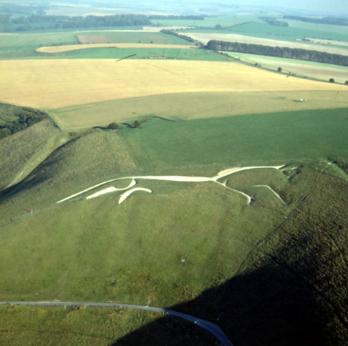 T
T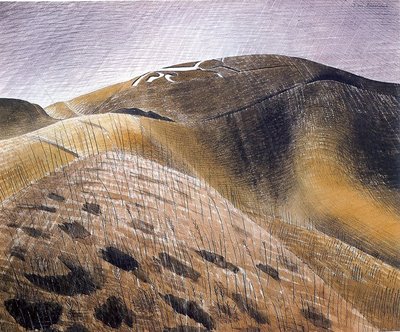 The
Dark Monarch: magic and modernity in British Art, currently at Tate St
Ives, shows how artists are influenced by
the genius loci or ‘spirit of place’, with all that implies in the way
of folklore, tradition, archaeology and rituals for fertility that
pervade the tradition.
The
Dark Monarch: magic and modernity in British Art, currently at Tate St
Ives, shows how artists are influenced by
the genius loci or ‘spirit of place’, with all that implies in the way
of folklore, tradition, archaeology and rituals for fertility that
pervade the tradition. 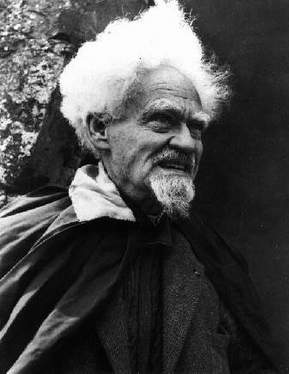 Osman Spare to lend a hand in the enterprise. Hutton, a
respected historian and Britain’s foremost academic on matters of
folklore, festival and Druidry, undoubtedly knows his broomsticks, for
he is an honourable pagan himself. What, of course, he means is that no
structured religion of witchcraft existed before Gardner arrived
on the scene. But there were ‘witches’ in rural villages and hamlets (if
the term may be applied to men and women who gathered herbs, mixed
potions for healing and made predictions). The notion of the Witches
Sabbath, where they gathered in order to honour Satan, was likely a
fantasy invented by priests and prosecutors, for witch hunting was
literally a cottage industry, offering work to craftsmen, demonologists
and food-sellers who sold pies and snacks during the burnings and
executions. When the commotion died away, many lost their livelihood
just as in the banning of fox-hunting today. Nearly all the gruesome
evocations of it arise from the torturer or lawyer specifically
outlining the scenario. Imagine him flourishing a pair of hot tongs and
bawling this: “Confess you assembled on Lark Hill at midnight, that
you kissed the buttocks of the Devil and afterward vomited a stream of
toads. Confess! Confess!”
Osman Spare to lend a hand in the enterprise. Hutton, a
respected historian and Britain’s foremost academic on matters of
folklore, festival and Druidry, undoubtedly knows his broomsticks, for
he is an honourable pagan himself. What, of course, he means is that no
structured religion of witchcraft existed before Gardner arrived
on the scene. But there were ‘witches’ in rural villages and hamlets (if
the term may be applied to men and women who gathered herbs, mixed
potions for healing and made predictions). The notion of the Witches
Sabbath, where they gathered in order to honour Satan, was likely a
fantasy invented by priests and prosecutors, for witch hunting was
literally a cottage industry, offering work to craftsmen, demonologists
and food-sellers who sold pies and snacks during the burnings and
executions. When the commotion died away, many lost their livelihood
just as in the banning of fox-hunting today. Nearly all the gruesome
evocations of it arise from the torturer or lawyer specifically
outlining the scenario. Imagine him flourishing a pair of hot tongs and
bawling this: “Confess you assembled on Lark Hill at midnight, that
you kissed the buttocks of the Devil and afterward vomited a stream of
toads. Confess! Confess!”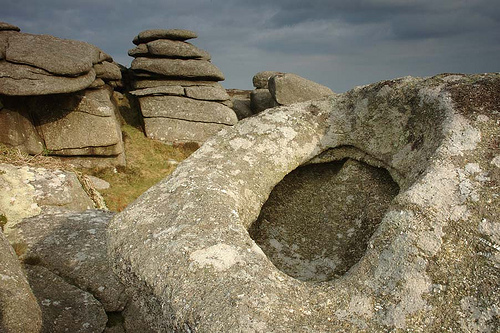
 Donald R. Rawe, who has written a popular
study of the subject, pointed out the Obby Oss of Padstow has an
antecedent in the legendary history of the Duchy. Some people identify
him with the dragon introduced by Teudar, the tyrannical lord of
Penwith, who ravaged the land around Padstow in the 6th
Century until confronted by kind, animal-loving St Petroc. The latter
was made the subject of a play in verse by Rawe who showed the saint
tracing the creature to its lair where he was confronted by a fairly
unfinicky spectacle:
Donald R. Rawe, who has written a popular
study of the subject, pointed out the Obby Oss of Padstow has an
antecedent in the legendary history of the Duchy. Some people identify
him with the dragon introduced by Teudar, the tyrannical lord of
Penwith, who ravaged the land around Padstow in the 6th
Century until confronted by kind, animal-loving St Petroc. The latter
was made the subject of a play in verse by Rawe who showed the saint
tracing the creature to its lair where he was confronted by a fairly
unfinicky spectacle: 
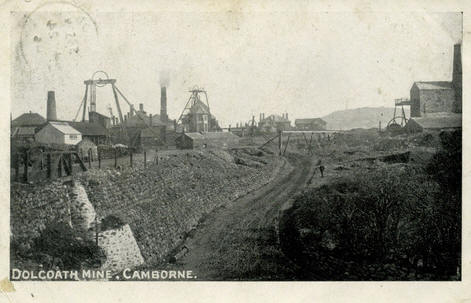 Consider the poet and hard-rock miner John Harris
(1820-1885) who, at the age of thirteen, accompanied his father into the
depths of Dolcoath Mine, over 2,000 feet deep and linked by some 75
miles of interconnecting passages. The journey was ricketty and
perilous. Ladder after ladder, ledge after ledge, was climbed down until
the ‘working’ was reached. There the rock was hacked and blasted and the
loosened pieces loaded into a barrow from which they were wheeled to the
collecting place and drawn up to the surface.
Consider the poet and hard-rock miner John Harris
(1820-1885) who, at the age of thirteen, accompanied his father into the
depths of Dolcoath Mine, over 2,000 feet deep and linked by some 75
miles of interconnecting passages. The journey was ricketty and
perilous. Ladder after ladder, ledge after ledge, was climbed down until
the ‘working’ was reached. There the rock was hacked and blasted and the
loosened pieces loaded into a barrow from which they were wheeled to the
collecting place and drawn up to the surface.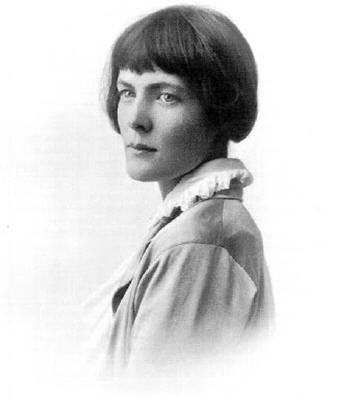
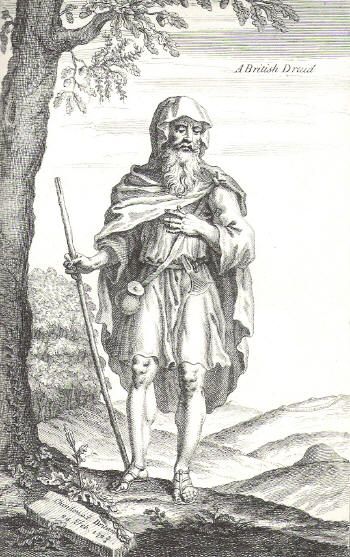 There
has always been a friction between magical or ‘entranced’ reality
and the rational, technological ethos of the present century.
There
has always been a friction between magical or ‘entranced’ reality
and the rational, technological ethos of the present century.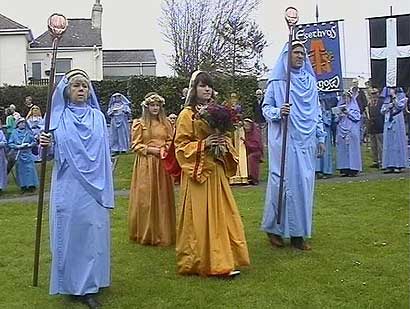 Ray Bradbury wrote a classic SF story ‘Dark they Were
and Golden Eyed’, about colonisers from earth landing on Mars and, as
time went by, acquiring the characteristics and habits of the former,
vanquished occupants. The same process takes place in the West Country
and elsewhere – for a culture does not belong to its people, being a
thing that reaches out and is shared. Consider the number of English
Rastafarians and those who choose to learn Welsh and Gaelic. What takes
place at an emotional level finally governs the facts. “I suspect the
truth is that the Celts are still here,” Alan Garner observed of his
native Lancashire, “and have always been here. In a way, before they
arrived. What this land has the ability to do is not to be invaded, but
to assume and consume and take unto itself and make its own.”
Ray Bradbury wrote a classic SF story ‘Dark they Were
and Golden Eyed’, about colonisers from earth landing on Mars and, as
time went by, acquiring the characteristics and habits of the former,
vanquished occupants. The same process takes place in the West Country
and elsewhere – for a culture does not belong to its people, being a
thing that reaches out and is shared. Consider the number of English
Rastafarians and those who choose to learn Welsh and Gaelic. What takes
place at an emotional level finally governs the facts. “I suspect the
truth is that the Celts are still here,” Alan Garner observed of his
native Lancashire, “and have always been here. In a way, before they
arrived. What this land has the ability to do is not to be invaded, but
to assume and consume and take unto itself and make its own.”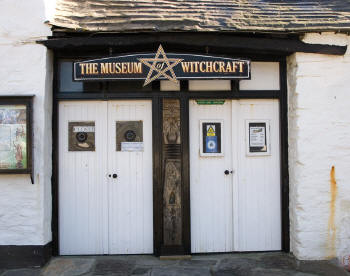
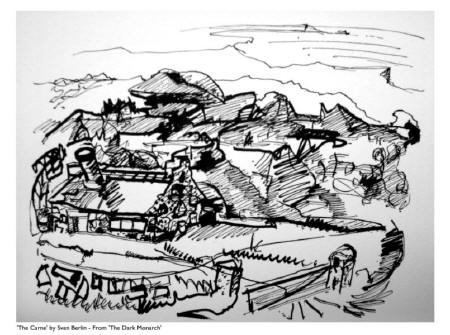
 these matters had
been implanted in fiction even before they happened, in such
Cornish-based stories as ‘The Devil’s Footprint’ by Sir Arthur Conan
Doyle and ‘Black Magic’ by Sidney Horler. Is this an example of life
taking the lead from art? Isaac Bashevis Singer wrote there is no such a
thing as a lie because, whatever you make up, no matter how fantastic,
will eventually manifest at some time and some place. Your wildest
imaginative goings on are a potential.
these matters had
been implanted in fiction even before they happened, in such
Cornish-based stories as ‘The Devil’s Footprint’ by Sir Arthur Conan
Doyle and ‘Black Magic’ by Sidney Horler. Is this an example of life
taking the lead from art? Isaac Bashevis Singer wrote there is no such a
thing as a lie because, whatever you make up, no matter how fantastic,
will eventually manifest at some time and some place. Your wildest
imaginative goings on are a potential. Many
years later, middle-aged and slightly battered, I found myself walking
up the path to the fall when I was stopped by a man who held up his hand
like a traffic controller, saying if I wanted to see the waterfall I’d
have to first pay a fee and agree not to take any photographs. I felt
like a serf being reprimanded by a Norman baron and was amused and
dismayed by the way he spread his arms as if to block any attempt I
might make to peer around him and get a sneaking glimpse of the natural
wonder. When I did see the fall, I was surprised how it had changed.
Forty years ago, it was bare and empty, hardly a single visitor, and I
was able to paddle and swim in the pool below. But now the trees above
the torrent were thickly decorated with votives, bits of coloured cloth
and ribbon hanging from every branch. The adjoining plot, too, has been
adapted as a complex where one can purchase charms, mementoes, oils,
tools of healing and spiritual regeneration. This was a smart enough
move. After the mines had dried up and shoals of herring departed, the
spell of Cornwall was bound to acquire a commercial slant. Even in the
Middle Ages, if you wanted a saint’s bone or a chipping off the sacred
cross, you’d have to fork out. As any insurance company will tell you,
eternal health and good fortune does not come cheap.
Many
years later, middle-aged and slightly battered, I found myself walking
up the path to the fall when I was stopped by a man who held up his hand
like a traffic controller, saying if I wanted to see the waterfall I’d
have to first pay a fee and agree not to take any photographs. I felt
like a serf being reprimanded by a Norman baron and was amused and
dismayed by the way he spread his arms as if to block any attempt I
might make to peer around him and get a sneaking glimpse of the natural
wonder. When I did see the fall, I was surprised how it had changed.
Forty years ago, it was bare and empty, hardly a single visitor, and I
was able to paddle and swim in the pool below. But now the trees above
the torrent were thickly decorated with votives, bits of coloured cloth
and ribbon hanging from every branch. The adjoining plot, too, has been
adapted as a complex where one can purchase charms, mementoes, oils,
tools of healing and spiritual regeneration. This was a smart enough
move. After the mines had dried up and shoals of herring departed, the
spell of Cornwall was bound to acquire a commercial slant. Even in the
Middle Ages, if you wanted a saint’s bone or a chipping off the sacred
cross, you’d have to fork out. As any insurance company will tell you,
eternal health and good fortune does not come cheap.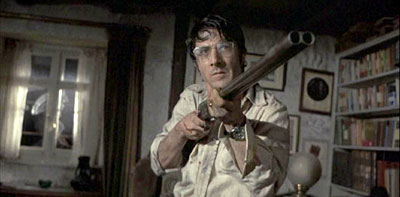 Penwith attracts
screenwriters and masters of the macabre. The late romantic author Mary
Williams set many little bits of creepiness there, often focussing on
malevolent, subterranean forces sweeping up from the ground and
possessing or effacing vain artists or over-complacent visitors. Many
before Mary had offered similar fare, notably A.L. Rowse, Frank Baker,
Denys Val Baker and Daphne du Maurier. Some might recall the last of the
‘Bulldog Drummond versus Carl Petersen trilogy’ entitled Final Count
reached its climax at Land’s End when the arch-villain was forced by the
ultra-manly hero to drink his own poison.
Penwith attracts
screenwriters and masters of the macabre. The late romantic author Mary
Williams set many little bits of creepiness there, often focussing on
malevolent, subterranean forces sweeping up from the ground and
possessing or effacing vain artists or over-complacent visitors. Many
before Mary had offered similar fare, notably A.L. Rowse, Frank Baker,
Denys Val Baker and Daphne du Maurier. Some might recall the last of the
‘Bulldog Drummond versus Carl Petersen trilogy’ entitled Final Count
reached its climax at Land’s End when the arch-villain was forced by the
ultra-manly hero to drink his own poison.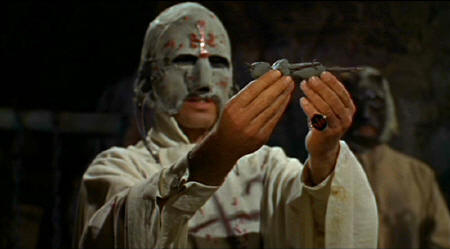
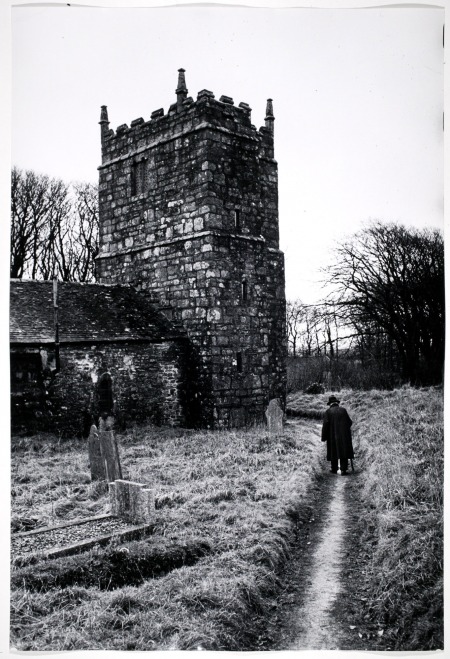 One scene showed
Densham attempting to woo back his congregation by cultivating the
children of the parish, offering them a slide show of cultural images,
some of which were horrific, such as the gouging out by Ulysses’s crew
of the eye of the Cyclops. In the movie, no children turned up, but
another story states that they did but were traumatised by what they
saw. This is curious, for a similar magic picture show was played to
children by the sinister magician, Karswell, in M.R. James’s story
The Casting of the Runes (filmed as Night of the Demon) with
equally disastrous results.
One scene showed
Densham attempting to woo back his congregation by cultivating the
children of the parish, offering them a slide show of cultural images,
some of which were horrific, such as the gouging out by Ulysses’s crew
of the eye of the Cyclops. In the movie, no children turned up, but
another story states that they did but were traumatised by what they
saw. This is curious, for a similar magic picture show was played to
children by the sinister magician, Karswell, in M.R. James’s story
The Casting of the Runes (filmed as Night of the Demon) with
equally disastrous results.